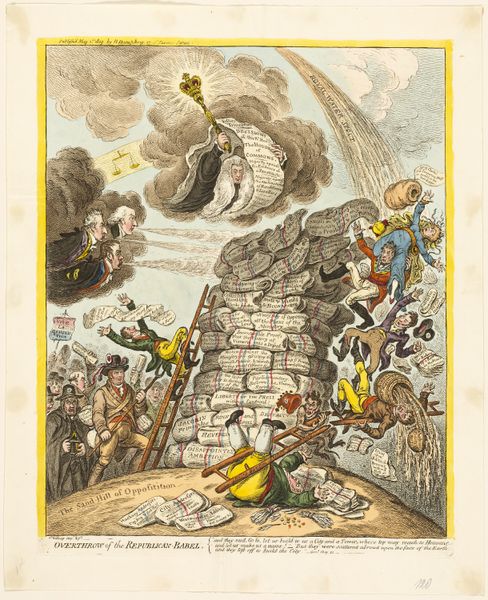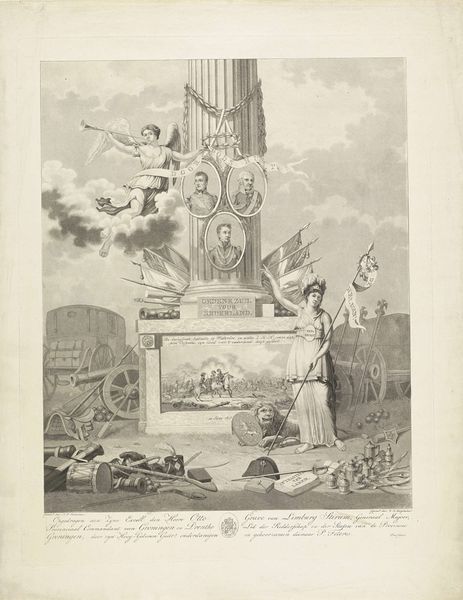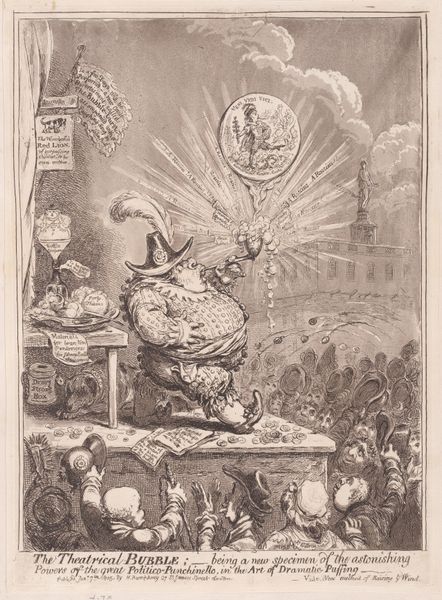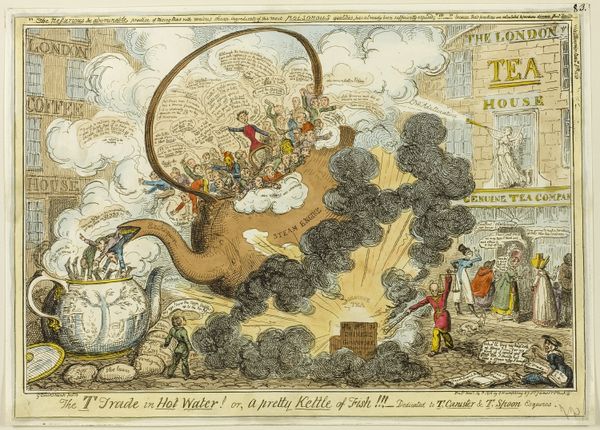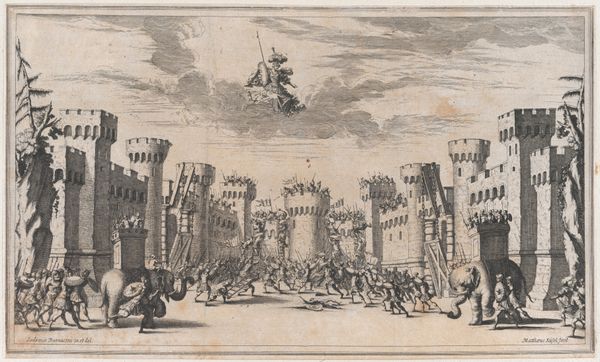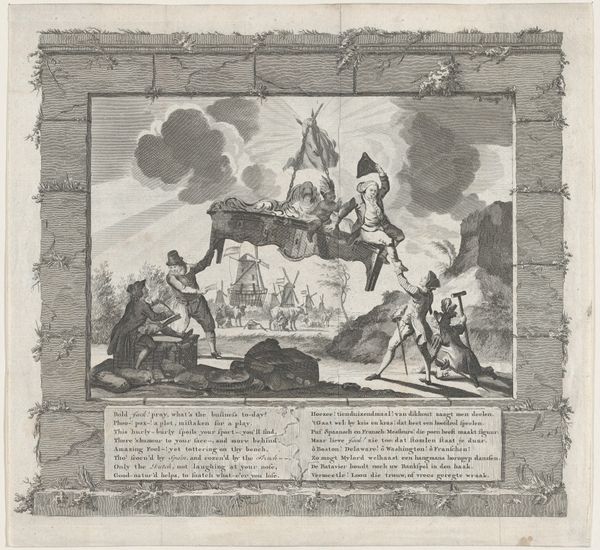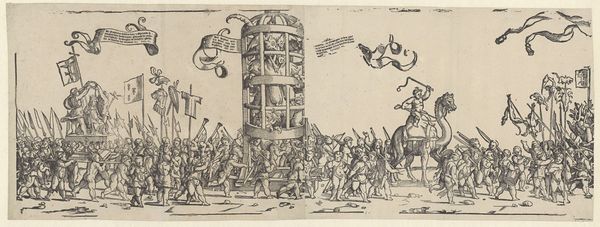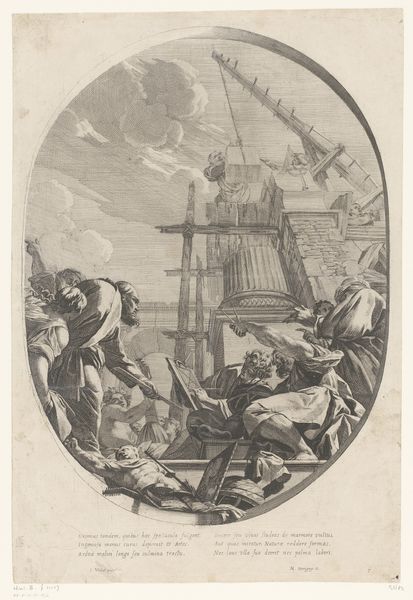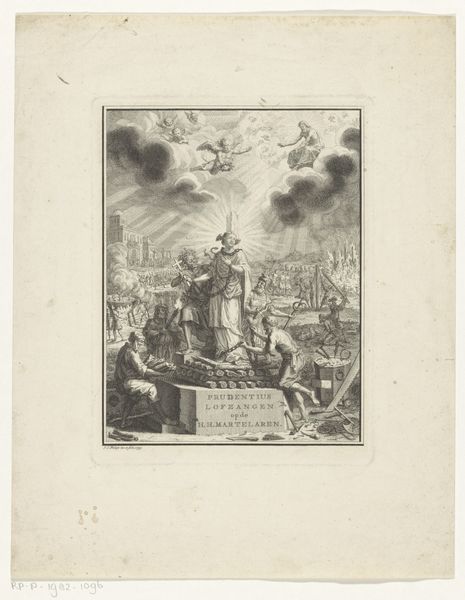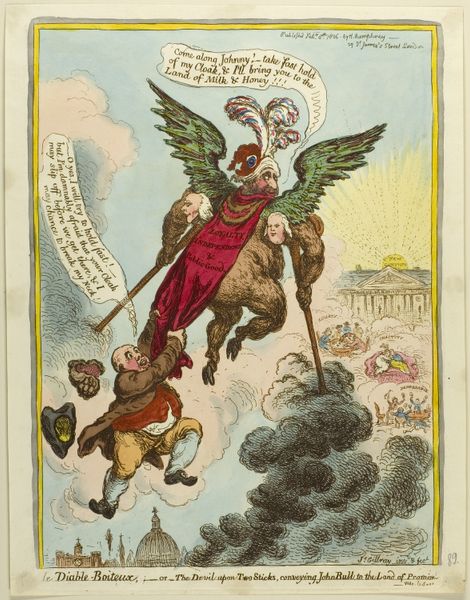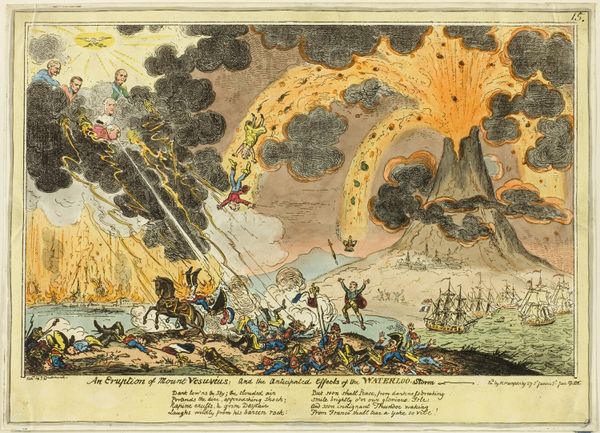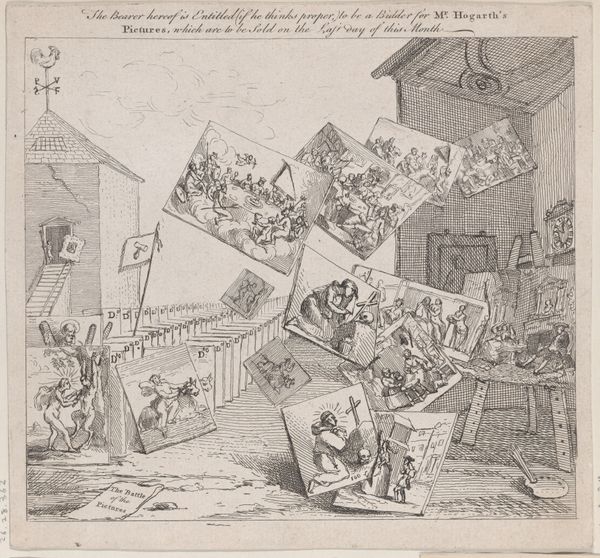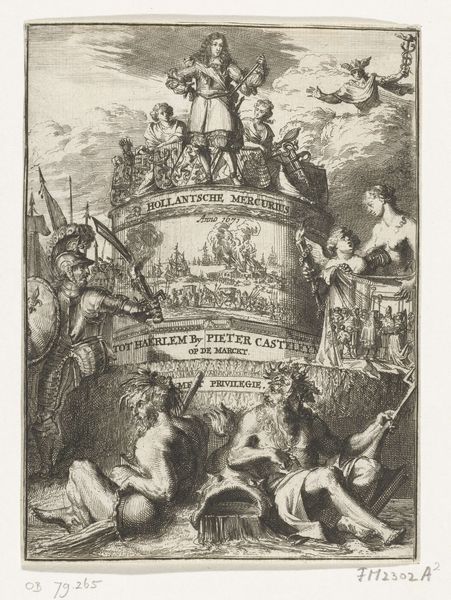
drawing, coloured-pencil, print, etching
#
drawing
#
coloured-pencil
#
narrative-art
# print
#
etching
#
caricature
#
coloured pencil
#
romanticism
#
watercolour illustration
#
history-painting
#
mixed media
Dimensions: height 547 mm, width 418 mm
Copyright: Rijks Museum: Open Domain
Editor: This is "Spotprent op de Franse expeditie naar Egypte, 1799," a colored pencil, etching and print by James Gillray, likely created in 1799. It seems chaotic, with a mob attacking a column. What strikes you about this piece? Curator: What interests me most is how Gillray utilizes accessible printmaking to critique power. Consider the etching itself: a relatively inexpensive and reproducible medium, making it available to a wider audience beyond the elite art patrons. What’s being *made* here? A challenge to established authority, visually distributed *en masse*. Editor: So the medium is the message, almost? Curator: Exactly. Think about the materials: paper, ink, pencil. Simple, almost mundane. Yet, Gillray transforms them into potent commentary. The choice of colored pencil adds another layer – it’s not the refined medium of high art, but something more accessible, lending itself to caricature and satire. Editor: I see what you mean. It does feel less formal than a typical history painting. Curator: Precisely! Gillray deliberately blurs the lines between “high” and “low” art. It's also not just the physical materials. It’s the entire system of production. Prints like these were often commissioned and sold in print shops, becoming part of a bustling market for political satire. Who *consumed* these images and what impact did it have on the social consciousness of the time? That's what fascinates me. Editor: I hadn't considered the commercial aspect of political cartoons at that time. Curator: Considering the artwork as product, not just symbol, can provide different understandings of it and the context it was created in. Editor: This reframes how I think about the piece entirely. Thanks! Curator: Indeed! And that constant interrogation of materials, method, and audience involvement is where we can understand this artwork’s real impact on art history.
Comments
No comments
Be the first to comment and join the conversation on the ultimate creative platform.
